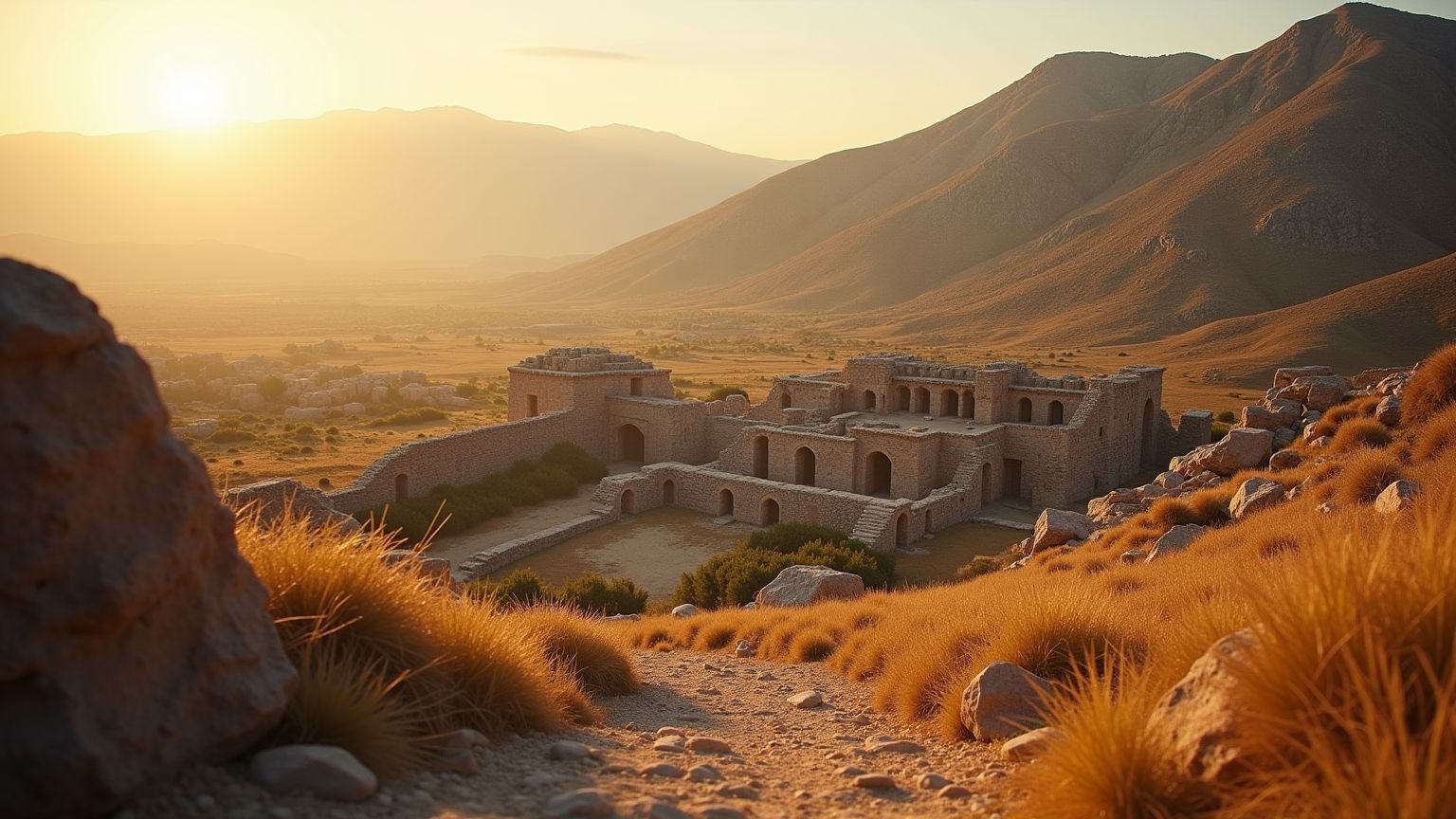Ancient Tiryns: The Forgotten Fortress of the Mycenaean World
After spending 15 years guiding curious souls through Greece's Peloponnese region, I've noticed a frustrating pattern - visitors dash from Mycenae to Epidaurus, completely bypassing what might be my secret obsession: the magnificent fortress of Tiryns. This UNESCO gem remains criminally underappreciated despite being one of Greece's most jaw-dropping archaeological treasures.
The Fortress That Homer Called "Mighty-Walled"

The transformation on people's faces when they first step through Tiryns' massive stone gateway never gets old. There's this unmistakable "holy cow" moment when visitors truly grasp what they're witnessing.
Homer wasn't just tossing around fancy adjectives when he described Tiryns as "mighty-walled" in the Iliad - these Cyclopean walls stand as the Bronze Age's most formidable defensive masterpieces anywhere on Earth.
Constructed during the Mycenaean civilization's golden era (14th-13th centuries BCE), Tiryns perches atop a modest rocky hill just 26 meters above the surrounding countryside. Don't let its unassuming height fool you - what Tiryns lacks in elevation, it flaunts in engineering brilliance.
Some limestone blocks in these walls weigh a staggering 13+ tons, prompting ancient Greeks to credit their construction to mythical one-eyed giants with superhuman strength.
While I always clarify that humans built Tiryns (impressive humans, but humans nonetheless), their achievement remains mind-blowing. These walls reach up to 8 meters thick in places and originally stood 7-8 meters tall, creating what must have felt like an absolutely impenetrable barrier to anyone foolish enough to attack.
What to Expect on Your Visit to Tiryns
Getting There
Tiryns sits just 3 kilometers north of charming Nafplio, making it an effortless detour if you're staying in this seaside town (which, frankly, makes the perfect base for regional exploration). From Athens, expect a straightforward 1.5-hour drive on well-maintained highways. Unlike those archaeological sites requiring Indiana Jones-style journeys, Tiryns welcomes visitors right off the main Nafplio-Argos road.
Public buses from Nafplio stop nearby, but having your own wheels gives you freedom to linger. I typically nudge my guests to pair Tiryns with nearby Mycenae for a full day of Bronze Age immersion, perhaps capping it with fresh seafood in Nafplio as the sun sets.
When to Visit
Let me share the insider's secret to timing your Tiryns visit perfectly. During summer (June-August), aim for early morning (8:00-9:00 AM) or late afternoon (after 4:00 PM) to dodge both the merciless Greek sun and occasional tour groups. One silver lining to Tiryns' under-appreciated status? Even during peak season, it rarely feels overrun.
Spring (April-May) and autumn (September-October) offer my personal favorite conditions - gentle temperatures, photographer's-dream lighting, and even smaller crowds. Tiryns welcomes visitors year-round, typically 8:00 AM to 3:00 PM in winter or until 8:00 PM during summer months. A quick check of the Greek Ministry of Culture website before visiting never hurts.
Tickets and Guided Tours
Your wallet will thank you for visiting Tiryns - entrance fees hover around €4 per adult, with discounts for seniors and free entry for EU students. If you're hitting multiple archaeological sites around the Argolid region, the unified ticket including Mycenae, Epidaurus and other nearby wonders offers excellent value.
While informational panels in Greek and English make self-guided tours perfectly viable, I'll be brutally honest: having a knowledgeable guide transforms Tiryns from "pile of impressive old rocks" to "living, breathing Bronze Age citadel."
- Small group tours run from agencies in Nafplio
- Private guides (like yours truly) offer deeper insights
- Guided tours help connect architecture to mythology and daily life
- Understanding context transforms stones into stories
The Site: A Walking Tour of Ancient Tiryns
The Approach and Lower Citadel
Your Tiryns adventure begins at the hill's base, where those massive Cyclopean walls immediately command respect. As you approach, notice the ingeniously designed zigzagging ramp - not just a path, but a defensive masterstroke forcing any attackers to expose their unshielded right sides to defenders above. These Bronze Age architects were thinking three steps ahead!
The lower citadel once bustled with workshops and housing for everyday citizens. Though time has been less kind to these sections, the visible outlines of buildings paint a picture of the vibrant community that once thrived here, going about their daily lives in the shadow of those imposing walls.
The Famous Gallery Passages
Tiryns' most distinctive feature might be its remarkable covered passages built within the thickness of the walls themselves. Walking through these corbeled corridors (where each stone layer projects slightly inward until meeting at the top) delivers an experience you simply won't forget.
I always urge visitors to pause inside these passages and notice two things:
- The surprising coolness even on scorching summer days - Bronze Age air conditioning!
- The weight of history literally suspended above you - these stones have hung in perfect balance for over 3,000 years without mortar
These galleries served dual purposes - both defensive positions and cleverly concealed storage spaces within the massive walls. Standing inside them creates an almost visceral connection to the past that no textbook could possibly convey.
The Upper Citadel and Palace Complex
Continuing upward, you'll reach Tiryns' beating heart - the upper citadel containing the royal palace complex. This exclusive zone hosted Mycenaean royalty and elites as they governed, worshipped, and enjoyed luxuries unimaginable to common folk below.
The palace follows the classic Mycenaean megaron layout:
- Central throne room with large circular hearth
- Surrounding support columns
- Formal anteroom with portico
- Evidence of colorful wall frescoes (now mostly gone)
- Sophisticated drainage system beneath floors
My favorite spot to point out? The small bathroom with its clay bathtub still visible after three millennia. This humble feature reminds us that behind the myths and monuments were actual humans who appreciated a good soak after a long day of Bronze Age kingship!
The View from the Top
Reaching Tiryns' summit rewards you with the strategic panorama that made this location so valuable. From this vantage point, Mycenaean rulers could:
- Monitor the entire fertile Argolic plain
- Watch for approaching vessels (the coastline was closer then)
- Control vital trade routes
- Communicate with other defensive positions
On clear days, you can see across to Nafplio's distinctive profile, out to the sparkling Argolic Gulf, and northward toward Mycenae. This vista alone justifies the climb, offering both spectacular photo opportunities and a geography lesson that puts Tiryns in its proper context.
Mythological Connections
Walking through Tiryns without acknowledging its mythological significance would be like visiting Graceland without mentioning Elvis. This fortress claims fame as the birthplace of Heracles (Hercules), the most celebrated hero in Greek mythology. According to ancient tradition, Tiryns was ruled by King Eurystheus, who assigned Heracles his legendary Twelve Labors.
As we wander among these ancient stones, I love watching visitors' eyes light up hearing tales of how Heracles:
- Returned triumphantly with the Nemean Lion's impenetrable pelt
- Dragged the captured Erymanthian Boar back to Tiryns
- Completed increasingly impossible tasks for the jealous king
These aren't just entertaining campfire stories - they represent how ancient Greeks processed their own history, explaining the world around them through narratives that still captivate us thousands of years later. At Tiryns, archaeology and mythology dance together particularly gracefully.
What Makes Tiryns Special?
Having led countless tours through virtually every major archaeological site in Greece, I'm often asked why travelers should make time for Tiryns when there are so many ancient ruins competing for attention. My unfiltered assessment:
Authentic Experience
Unlike tourist-swarmed sites that sometimes feel like archaeological theme parks with gift shops, Tiryns offers something increasingly rare - space to breathe and absorb. You can explore at your own rhythm without battling selfie sticks, really connecting with these ancient structures in contemplative silence.
Engineering Marvel
The defensive walls at Tiryns represent an engineering achievement that remains humbling even by modern standards. The knowledge required to quarry, transport, and precisely position these massive stones using nothing but Bronze Age technology borders on the miraculous.
Tactical Brilliance
Military history buffs find themselves particularly captivated by Tiryns. Every aspect of its design - from strategic positioning to the thoughtful arrangement of gates, passages and sightlines - reveals sophisticated tactical thinking that would impress even today's defense experts.
Reasonable Accessibility
While many impressive archaeological sites demand strenuous hiking, Tiryns offers its wonders without excessive physical demands. Though you'll navigate some steps and uneven terrain (comfortable shoes are non-negotiable), the site's most impressive features don't require mountain-goat abilities to reach.
Practical Tips for Your Visit
After guiding everyone from archaeology professors to energetic families through Tiryns, I've gathered some hard-earned wisdom to enhance your experience:
Time Needed
Give yourself at least 1.5 hours to properly absorb Tiryns. Archaeology enthusiasts might happily spend 2-3 hours examining architectural details and soaking in the atmosphere. This isn't a place to rush through on a tight schedule.
What to Bring
- Water bottle (the Greek sun is unforgiving, especially May-September)
- Wide-brimmed hat and serious sunscreen (shade is limited)
- Footwear with proper grip (those ancient stones get slippery)
- Camera with spare battery (the interplay of light and stone creates magical photo opportunities)
- Small binoculars for examining architectural details without climbing on fragile structures
Photography Sweet Spots
For truly dramatic shots that'll make your Instagram followers gasp, try:
- Capturing the lower citadel walls from below during golden hour
- Shooting through gallery passages where light creates dramatic shadows
- Framing panoramic landscapes through ancient doorways
- Using human subjects for scale against the massive walls
Beyond Tiryns
After your Tiryns expedition, consider these nearby treasures:
- Nafplio's Archaeological Museum houses actual artifacts excavated from Tiryns
- Palamidi Fortress offers a fascinating contrast between Bronze Age and Venetian defensive architecture
- The acoustically perfect theater of Epidaurus sits just 30 minutes away
- Mycenae, Tiryns' more famous sister citadel, waits 20 minutes north
Final Thoughts
After countless visits to Tiryns across seasons and years, something about this particular ancient fortress still stops me in my tracks. Perhaps it's how afternoon light creates long, dramatic shadows through those gallery passages, or the way massive stones have defied earthquakes, invaders and time itself for over three thousand years.
Whatever the magic, Tiryns embodies the perfect archaeological experience - historically significant and architecturally magnificent, yet peaceful enough for genuine exploration. While lacking the Instagram fame of sites like the Acropolis or Delphi, Tiryns offers something increasingly precious in our hyperconnected world - an authentic encounter with one of humanity's most remarkable ancient achievements.
For travelers willing to venture slightly off the tourist conveyor belt, Tiryns delivers something truly special - a mighty fortress that has silently watched over the Argolic plain since heroes roamed Greece, patiently waiting for you to walk the same stones as Mycenaean kings and perhaps even Heracles himself.
🏺 Discover Ancient Greece With Expert Guides
Transform your historical knowledge into unforgettable archaeological experiences
Historical Tours
UNESCO Archaeological Sites
Peloponnese Tours
25+ Local Experiences
Adventure Tours
Outdoor Activities








